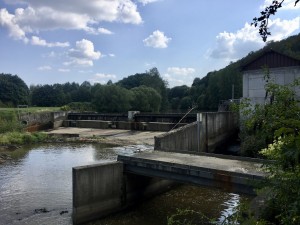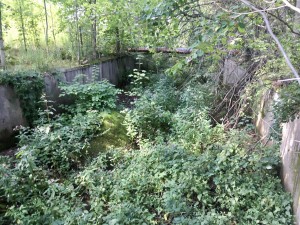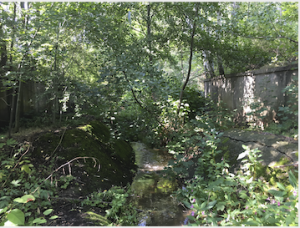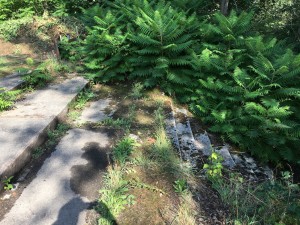I flew out to Slalom World Cup 4 last weekend in Markkleeburg in Germany in my role as sport psychologist with three British and Irish athletes. 30 years ago, such a trip would have been almost impossible, and not just because budget airlines didn’t exist, but because it would have meant travelling behind the ‘Iron Curtain’ to communist East Germany (DDR). And this reminded me of a half remembered story I’d heard about a lost slalom course….
Once upon a time, or at least after the second world war, Russia controlled the eastern parts of Germany and established a communist state that lasted until 1989. Like other eastern bloc countries, the DDR invested heavily in sport, to showcase the benefits of communism over the ‘decadent’ capitalist west. This led to intense rivalry, particularly between West and East Germany, and no more so than in canoeing, a sport with a long and rich history: flatwater sprint racing made its Olympic competition debut in Berlin in 1936, and slalom featured in the Munich Olympics in 1972, at the famous man-made Augsburg Eiskanal.
Bill Endicott describes in his book ‘The River Masters’ how the DDR came to be the strongest nation in slalom. With professional, fully funded athletes and the full scientific resources of the state behind them, East German paddlers were the dominant force in the sport from 1955 onwards. At the 1957 World Championships in Augsburg, they won 10 out of 15 available individual medals. At successive World Champs they routinely took the honours, so much so that it was considered an upset if an East German didn’t win. So, the 1972 Olympics was a big deal for the DDR, because it would be hosted by their West German arch-rivals, bringing into sharp focus the ideological battle between capitalism and communism. Given their dominance in slalom, the DDR was clearly committed to winning the sport’s Olympic debut.
The main problem was that in 1971 the West Germans spent 14.9 million Deutsche Marks (US$24.5 million) to build the world’s first artificial slalom course in Augsburg.The features on the course were novel, challenging and inconsistent – quite unlike a natural river. At their first competitive outing on the new course, the DDR team uncharacteristically struggled to perform, while their West German rivals showed their comfort on the water. With the Olympics only a year away, the DDR authorities decided on drastic action. In just three months, they built a replica of the Eiskanal by the Zwickau-Mulde river, reproducing its unpredictable, surging water features. They also built a series of dormitories so the athletes and coaches could live and train next to the new course. Suitably prepared, the DDR turned up at the Olympics and took the Gold medal in each of the four slalom events – beating the West Germans in front of their home crowd and the world’s TV audiences, who by the millions tuned into an exciting new sport. News of the secret course started to emerge after the Games – British slalom paddler Alan Donnelly recalls seeing it when he was racing at the established Zwickau course in 1973.
After slalom fell out of the Olympic programme in 1976, the DDR government withdrew funding, and East German dominance of the sport ebbed away. I remember seeing East German paddlers in Czechoslovakia in 1983, paddling old fibreglass boats. Then in the early 90’s after the fall of the Berlin wall, new faces started to appear on the German national team, paddlers like Kordula Striepecke, who proved that talented canoeists had never really disappeared from the former DDR.
Back to the Markkleeburg World Cup last weekend. With a spare couple of hours after the morning’s competition was over, I decided to go in search of the lost slalom course. I recalled seeing some references online and after a few false starts (I thought the course was in Leipzig, when it’s actually an hour or so south in Zwickau), I found the map reference on the Augsburg Eiskanal wikipedia page.
Here are the coordinates if you want to look on Google maps
Then it was simply a matter of following Google maps, which took me right to the spot. Tucked away behind some railway tracks and beside well-maintained garden allotments, the old channel is completely overgrown and almost invisible from the path. I jumped the fence and pushed my way in, instantly regretting that I was wearing shorts and decent shoes. It’s possible to climb down and follow the channel, although there’s still a little water running through it. At times the vegetation was too thick or prickly to get past, or the water too deep, so I retreated up and out of the channel till I could get closer again. The sides are about 1.5 – 2.0 metres deep, and about 3 – 5 metres wide. I believe this is about 2/3 the scale of the Eiskanal. There are still some metal stanchions visible, that would have been used for the gate wires, and there are plenty of smooth shaped concrete obstacles to see – all covered in moss. The dormitories are still there too, and are in good condition, but I don’t know what their use is now. It’s fascinating, and a little eerie, to see a decaying slalom course like this. I tried to imagine what it was like 48 years ago, full of rushing water, strung with gates and with the buzz of activity as athletes and coaches trained in pursuit of Olympic glory. Like the East German state that created it, the course is now largely forgotten and out of sight.
Researching this blog, I came across this beautiful, haunting film of the Zwickau Cainsdorf course. It was filmed in winter, so much more of the channel is visible than I saw with summer vegetation.
https://www.youtube.com/watch?v=kXeHF0WJjm8
If you can read German, you’ll probably learn more on this website, which also has some good photos.
Here are some of my photos, but I don’t think they do the place justice:







